 This is the palace at the Luxembourg Gardens in Paris, France. In this photo I am showing obedience to the principle of "zones" in a landscape photo: the idea that there is something in the front, something in the middle and something in the back. I guess it makes something that is two dimensional seem more three dimensional.
This is the palace at the Luxembourg Gardens in Paris, France. In this photo I am showing obedience to the principle of "zones" in a landscape photo: the idea that there is something in the front, something in the middle and something in the back. I guess it makes something that is two dimensional seem more three dimensional.
France
Shadow & Light
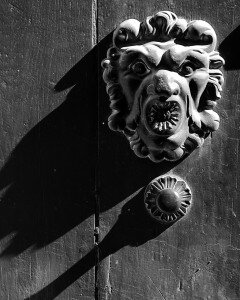 This was a decoration on the base of a public fountain in Arles, France. As I was getting this photo ready for posting, it occurred to me that I rarely go looking for "sun and shadow" photos because I am usually looking for soft light in shade. It is part of my style. Or rut.Arles is the city in which Van Gogh, one of my favorite artists, lived and worked for a while. Other artists besides Van Gogh worked in the south of France because of the light. The weather isn't bad, either.Canon 20D 1/100s f/7.1 ISO200 68mm
This was a decoration on the base of a public fountain in Arles, France. As I was getting this photo ready for posting, it occurred to me that I rarely go looking for "sun and shadow" photos because I am usually looking for soft light in shade. It is part of my style. Or rut.Arles is the city in which Van Gogh, one of my favorite artists, lived and worked for a while. Other artists besides Van Gogh worked in the south of France because of the light. The weather isn't bad, either.Canon 20D 1/100s f/7.1 ISO200 68mm
This work is licensed under a Creative Commons Attribution-Noncommercial-No Derivative Works 3.0 United States License.
Our Place In Corsica
 This was only our "place" for three nights. But it came with a nice beach and great food (as pictured yesterday). One of the things I try to do when I plan our foreign travel is to get to places that aren't overwhelmed by American tourists. Being an American, I don't mind other Americans. But if I want to go to some place exotic just to be swarmed by other Americans, the Mall of America is closer and cheaper.Corsica is certainly off the beaten path - especially in early June, when Deb and I were there. The hotel's name is the Hotel Abbartello, and it is on the West coast of Corsica. I think we paid about $80 per night for a nice room, a nice beach and food that was locally renowned.
This was only our "place" for three nights. But it came with a nice beach and great food (as pictured yesterday). One of the things I try to do when I plan our foreign travel is to get to places that aren't overwhelmed by American tourists. Being an American, I don't mind other Americans. But if I want to go to some place exotic just to be swarmed by other Americans, the Mall of America is closer and cheaper.Corsica is certainly off the beaten path - especially in early June, when Deb and I were there. The hotel's name is the Hotel Abbartello, and it is on the West coast of Corsica. I think we paid about $80 per night for a nice room, a nice beach and food that was locally renowned.
03-09-10 The Gurgling Downspout
 Well, it's not gurgling here and this isn't an ordinary downspout. It's a gargoyle and it is located on the famous Sainte-Chapelle chapel, just around the corner from the Notre Dame de Paris. It is a marvelous combination of stained glass, stone and air. It's not on the "normal" tourists stops so you'll have to make special efforts to get there. Interestingly, its inside the main judicial complex in central Paris so you'll also have to go through metal detectors.
Well, it's not gurgling here and this isn't an ordinary downspout. It's a gargoyle and it is located on the famous Sainte-Chapelle chapel, just around the corner from the Notre Dame de Paris. It is a marvelous combination of stained glass, stone and air. It's not on the "normal" tourists stops so you'll have to make special efforts to get there. Interestingly, its inside the main judicial complex in central Paris so you'll also have to go through metal detectors.
One of the architectural features of many Gothic churches are the carved downspouts, known as gargoyles. And the sound of water rushing through the monster's mouth was described as a "gurgle," a word derived directly from the name of these conduits.
02-14-10 A Week In Paris: Parallel Parking
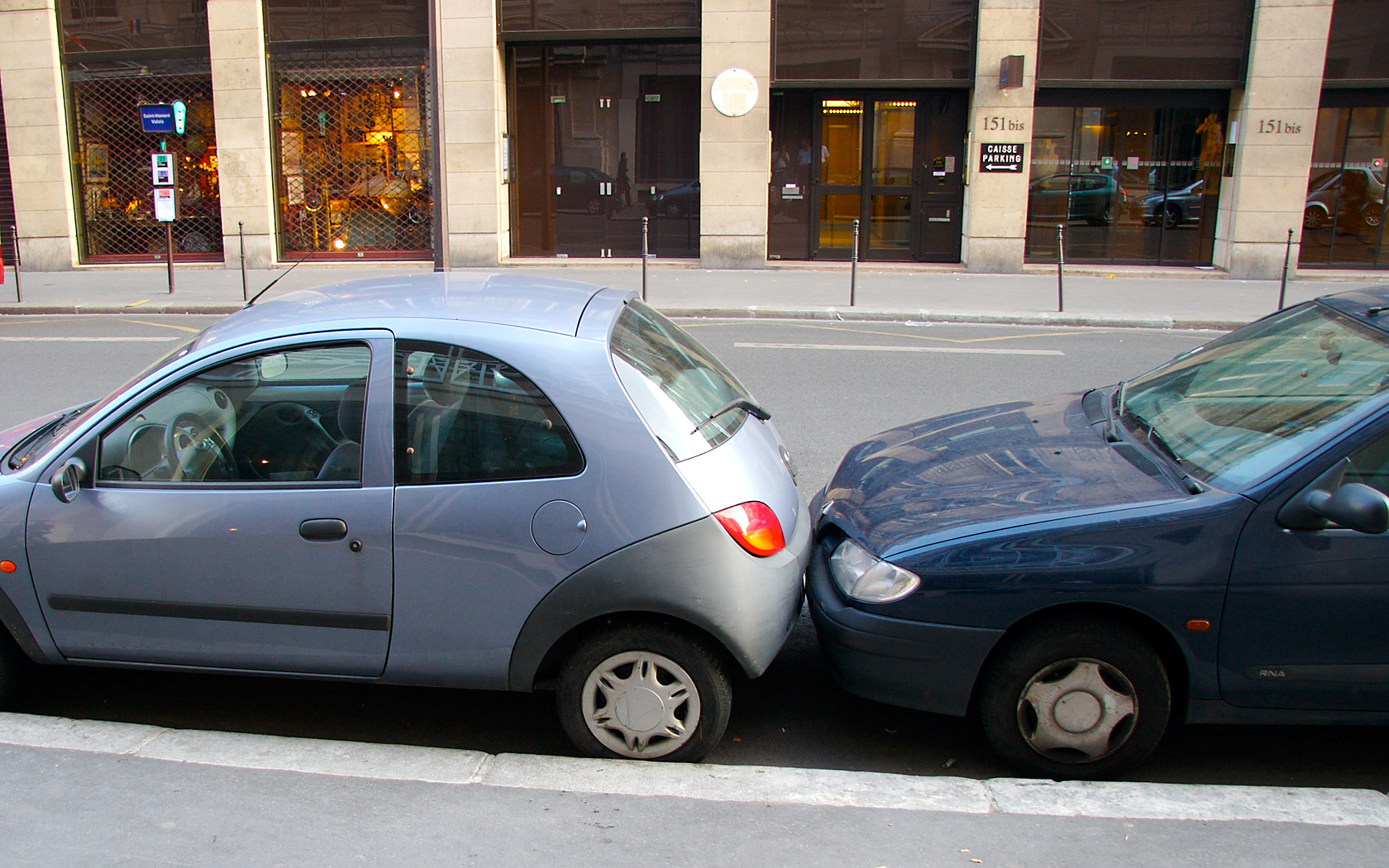 I apologize if you've been lured to my blog this week thinking that "A Week In Paris" would offer a series of spectacular views of the great monuments and buildings in this amazing city. Those shots have been posted (more or less). Two of my favorites: Here and Here
I apologize if you've been lured to my blog this week thinking that "A Week In Paris" would offer a series of spectacular views of the great monuments and buildings in this amazing city. Those shots have been posted (more or less). Two of my favorites: Here and Here
While those structures help define Paris, so does this snapshot. This was not a car accident; this was someone making the most out of limited curb side parking. I have see this more than once is my travels to the big cities of Europe. I have even seen cars wedged in on both ends and then, as if things could be made worse, cars parking in a new row along side of the blocked-in cars. I have never driven in Paris and don't think that I want to.
02-13-10 A Week In Paris: A View From Above (2)
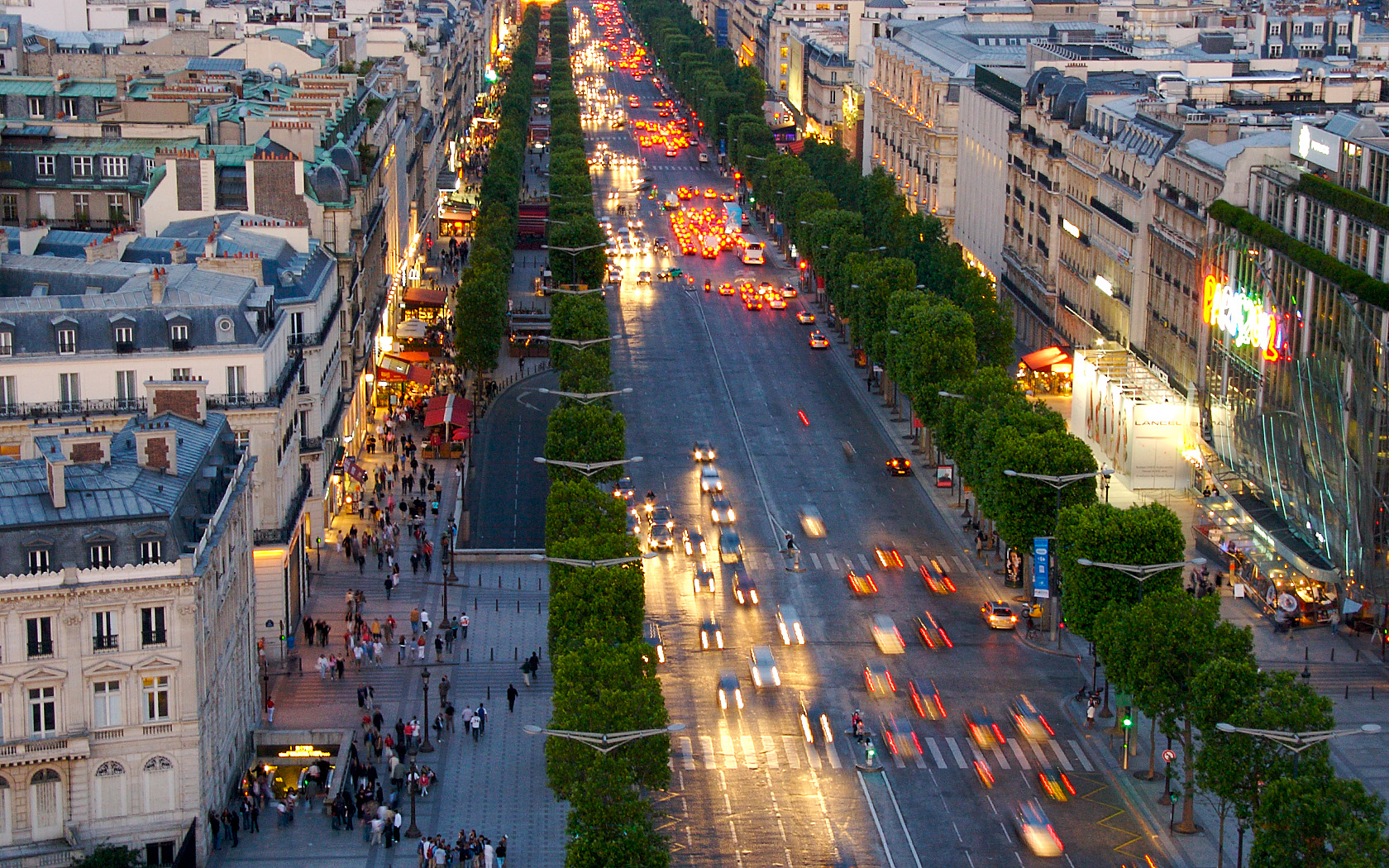 This is the most famous street in the world, as seen from the Arc di Triomphe. The Champs-Elyssee has some of the most exclusive stores and restuarants in the world: Chanel, Hugo Boss, Cartier, Louis Vuitton, to name a few. But there is a MacDonalds, too.
This is the most famous street in the world, as seen from the Arc di Triomphe. The Champs-Elyssee has some of the most exclusive stores and restuarants in the world: Chanel, Hugo Boss, Cartier, Louis Vuitton, to name a few. But there is a MacDonalds, too.
Would you think less of me if I told you that I had a Le Big Mac and a chocolate crepe there? It was the only store that I could afford.
02-10-10 A Week In Paris: Bonaparte!
 Napoleon, who conquered much of Europe, died at age 51 on the tiny island of St. Helena, where he had been exiled. Even today St. Helena is one of the most isolated places on earth. (See it on a map.) He was buried by the British in a grave with no name, primarily because of a dispute over which name should go on the tomb. Some wanted his full name - Napoleon Bonaparte. Others wanted the single name "Napoleon." In France, kings went by a single name.
Napoleon, who conquered much of Europe, died at age 51 on the tiny island of St. Helena, where he had been exiled. Even today St. Helena is one of the most isolated places on earth. (See it on a map.) He was buried by the British in a grave with no name, primarily because of a dispute over which name should go on the tomb. Some wanted his full name - Napoleon Bonaparte. Others wanted the single name "Napoleon." In France, kings went by a single name.
Almost 20 years later, Napoleon's remains were returned to Paris, where he was given a state funeral and buried under the dome of Les Invalides, a church near a hospital complex for French soldiers. Napolean, who stood 5'4" tall, is buried in a massive sarcophagus, the outer layer of which is made of porphyry marble. Inlaid marble lettering around his tomb commemorates his most famous victories. One battle not marked is Waterloo, which was his final defeat.
That's enough history!
10-13-10 Corsican Poppies
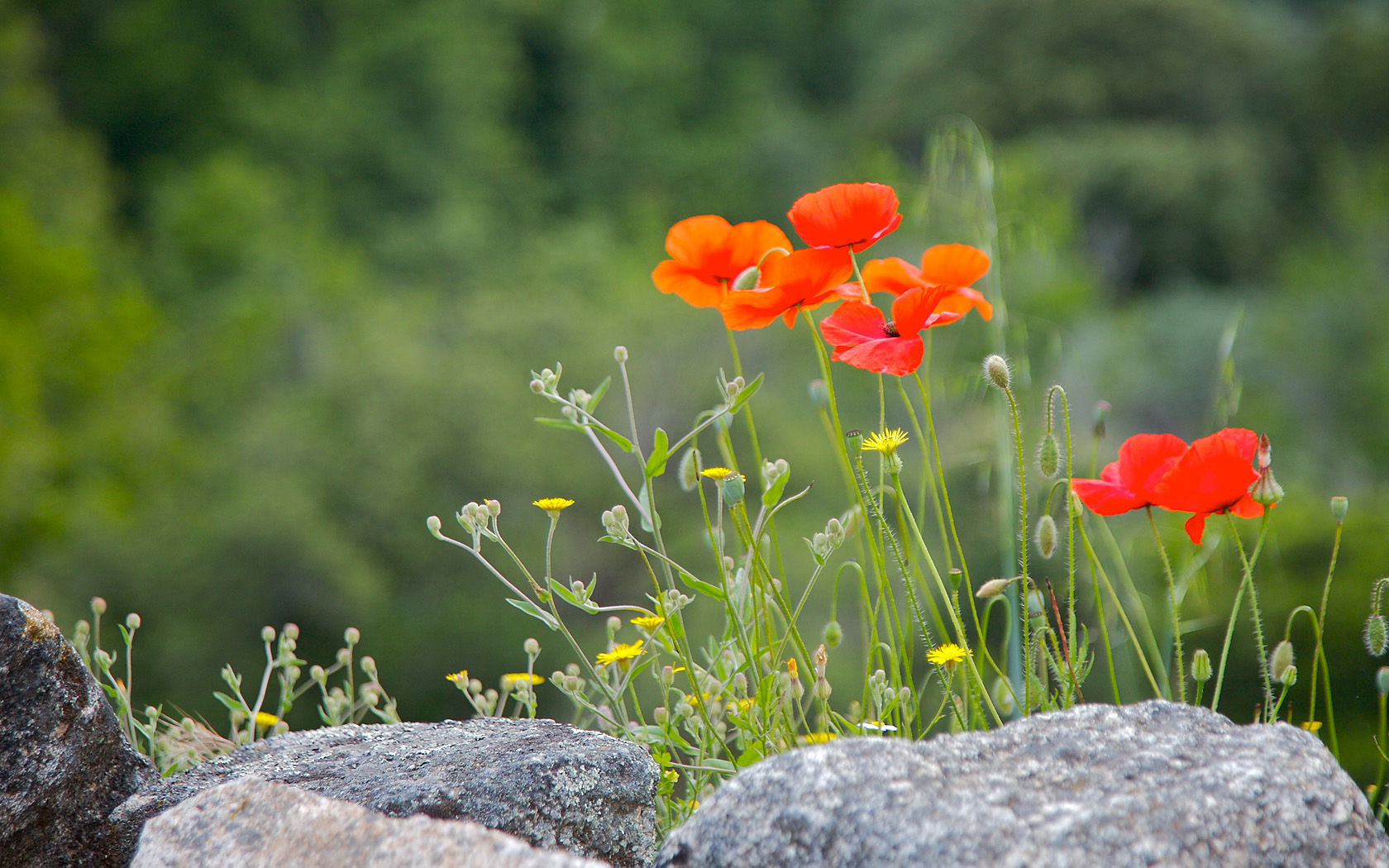 These poppies were on the island of Corsica, which is off the coast of Italy. They could have been anywhere, since they seem to grow wild along roads and in pastures throughout western Europe.
These poppies were on the island of Corsica, which is off the coast of Italy. They could have been anywhere, since they seem to grow wild along roads and in pastures throughout western Europe.
10-27-09 An Act of Devotion
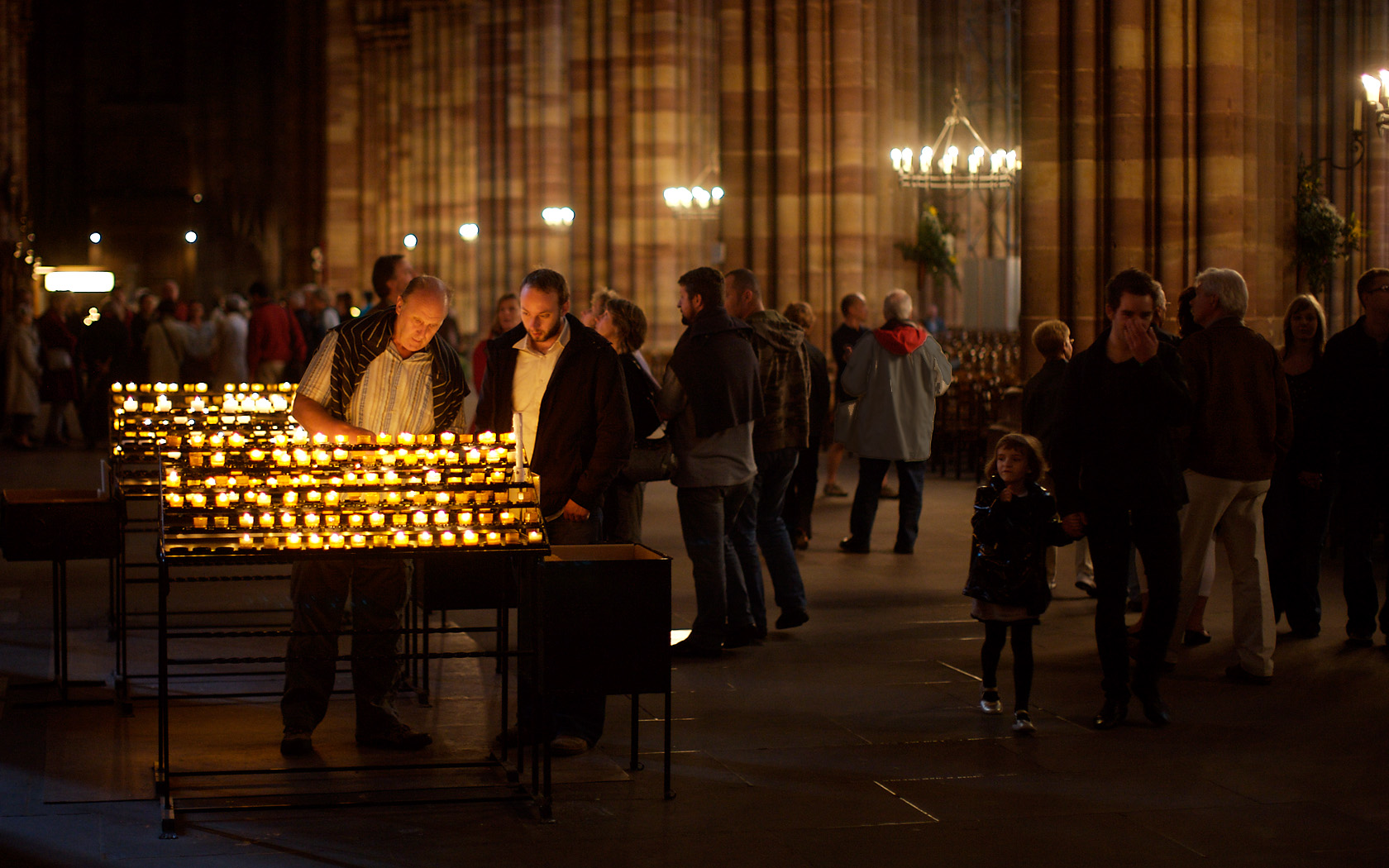 Gothic architecture was revolutionary in the 12th century because it allowed for very tall structures with relatively thin walls. And thin walls meant plenty of windows and lots of light. Compared to previous styles, Gothic architecture was light and airy but to inhabitants of the 21st century, these places are dark.
Gothic architecture was revolutionary in the 12th century because it allowed for very tall structures with relatively thin walls. And thin walls meant plenty of windows and lots of light. Compared to previous styles, Gothic architecture was light and airy but to inhabitants of the 21st century, these places are dark.
And the darkness makes this photo what it is, since the main lighting is the soft light reflecting up into the faces of the two men attending to the votive candles. In the medieval mindset, light warded off evil, so even a single candle made a dark place safer and more holy.
Canon 5D 1/60s f/1.2 ISO500 50mm
10-21-09 Seeing Red: Strasbourg Cathedral, France
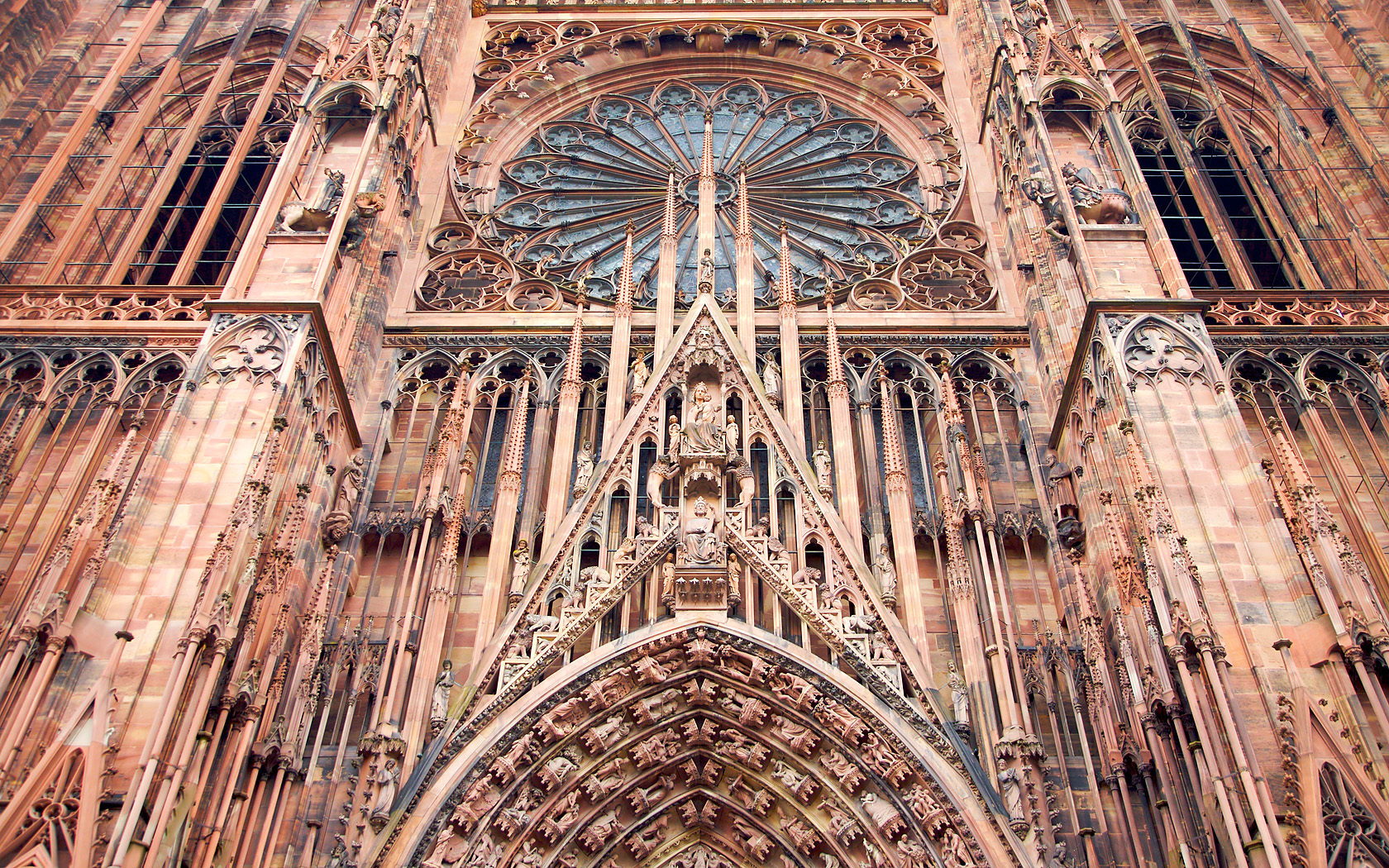 Pink is perhaps a more accurate color to describe this amazing structure. The color comes from the unique, local sandstone from which it is constructed. This cathedral is the 7th tallest church in the world and for 2 1/2 centuries it was the tallest building in the world. The cathedral's namesake town sounds German and the food looks German, but trust me - it is in the beautiful Alsace-Lorraine region of eastern France. On a side note, terrorists sought to detonate a bomb in the square in front of the cathedral in 2000 but the plot was revealed and foiled.
Pink is perhaps a more accurate color to describe this amazing structure. The color comes from the unique, local sandstone from which it is constructed. This cathedral is the 7th tallest church in the world and for 2 1/2 centuries it was the tallest building in the world. The cathedral's namesake town sounds German and the food looks German, but trust me - it is in the beautiful Alsace-Lorraine region of eastern France. On a side note, terrorists sought to detonate a bomb in the square in front of the cathedral in 2000 but the plot was revealed and foiled.
06-28-09 Quiet Mountain Village - Corsica
 Deb and I were out for a drive and found many mountain villages that were quiet and picturesque. In this case, I was able to use the trees to help frame the photograph. The orange things visible on the the left side of the photo are nets that are laid out under the olive trees they are attached. They catch the olives during harvest season.
Deb and I were out for a drive and found many mountain villages that were quiet and picturesque. In this case, I was able to use the trees to help frame the photograph. The orange things visible on the the left side of the photo are nets that are laid out under the olive trees they are attached. They catch the olives during harvest season.
This work is licensed under a Creative Commons Attribution-Noncommercial-No Derivative Works 3.0 United States License
05-22-09 Paris Street Performers
By Scott Shephard
This photo was taken on a "walking tour" of Paris that was part of the last school trip I took with students. We saw various parks and buildings but at one point, while walking through an arcade, we encountered this group of street musicians.
I wanted more than the musicians in the photo and so I walked behind the group and framed the violinist between two of his companions. At the moment I took the photo, the violinist looked my way. This is a brief encounter between me and one of the Earth's 6.7 billion inhabitants frozen in 1/60 of a second.
Canon 5D 1/60s f/4.5 ISO400 50mm
